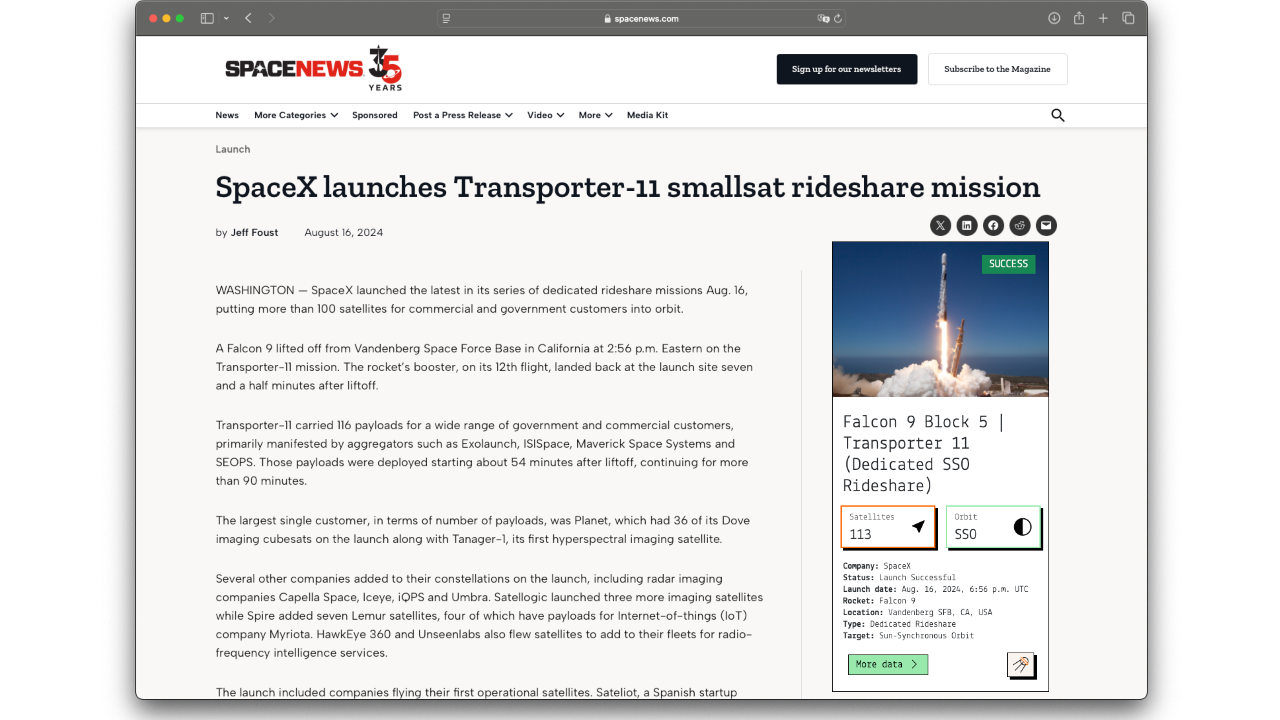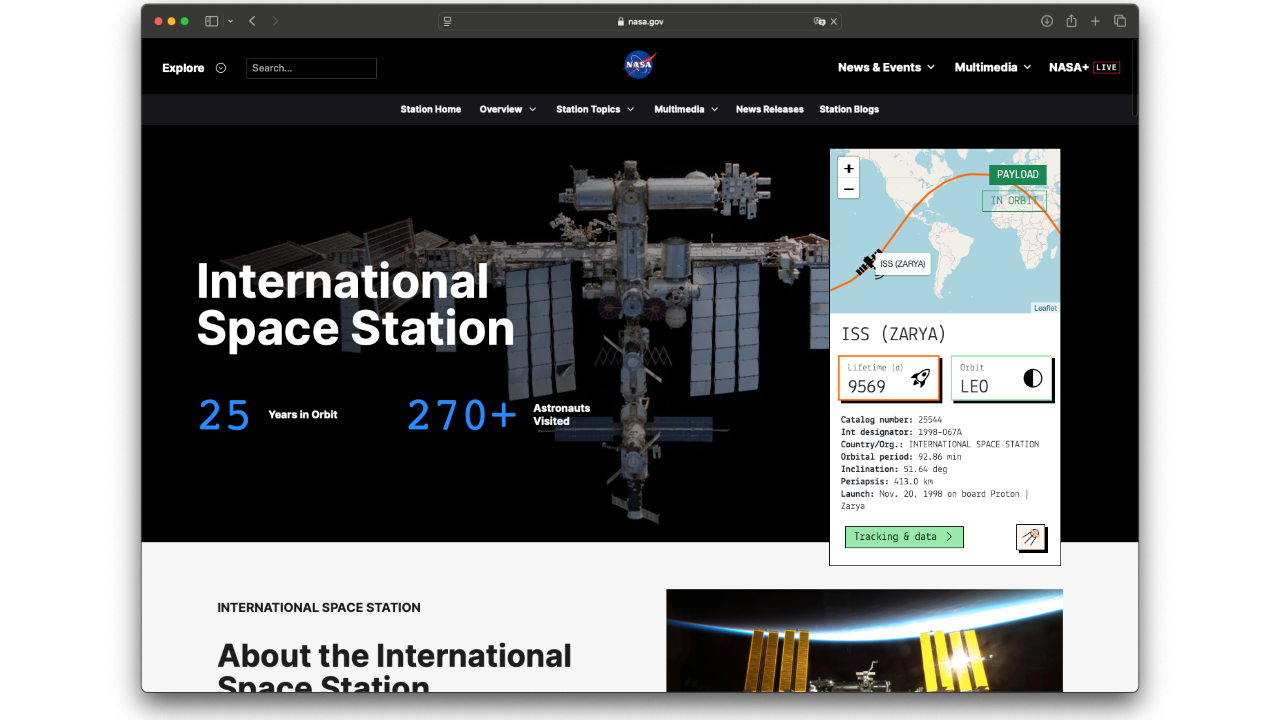Key statistics
Satellite HST at a glance.
Uptime
13023
Days in orbit
Revolutions
≈ 15.3
Per day
Orbit
LEO
Low Earth Orbit
Inclination
28.5
Latest
Satellite identification and parameters
Extended collection of information and parameters for HST.
Object identification
Identified? True
Debris? False
Object name: HST
International designator: 1990-037B
Object number (NORAD): 20580
Object ID (CCSDS): 20580
Country: UNITED STATES OF AMERICA (US)
Current information (Y/N): Y
RCS size: LARGE
Orbital parameters
Period: 94.233 minutes
Inclination: 28.4674 deg
SMA: 6859.568 km
Apoapsis: 482.763 km
Periapsis: 480.103 km
RAAN: 237.9032 deg
Eccentricy: 0.00019386
Argument of periapsis: 304.0454 deg
Mean anomaly: 55.9957 deg
Mean motion: 15.28120569 rev/day
Mean motion (dot): 0.00005642 rev/day2
B* drag term: 0.00019204557 1/REarth
Two-line elements (TLE)
Creation date: Dec. 18, 2025, 2:19 a.m.
Reference frame: TEME
Reference center: EARTH
Epoch: Dec. 17, 2025, 7:42 p.m. UTC
TLE line 0: 0 HST
TLE line 1: 1 20580U 90037B 25351.82092978 .00005642 00000-0 19205-3 0 9992
TLE line 2: 2 20580 28.4674 237.9032 0001939 304.0454 55.9957 15.28120569760772
Live tracking on map
Real-time ground track for satellite HST.
In-orbit conjunctions
There are no conjunctions computed for HST, at the moment. Check back to stay up to date, as we update our databases every day.
Go to all conjunctionsAssociated space launch
STS-31 was the thirty-fifth mission of the space shuttle program. Discovery's tenth mission deployed the Hubble Space Telescope.
HST was lifted into orbit during the mission ‘Space Shuttle Discovery / OV-103 | STS-31 (Hubble)’, on board a Space Shuttle space rocket.
The launch took place on April 24, 1990, 12:33 p.m. from Launch Complex 39B.
For more information about the launch, click the button.
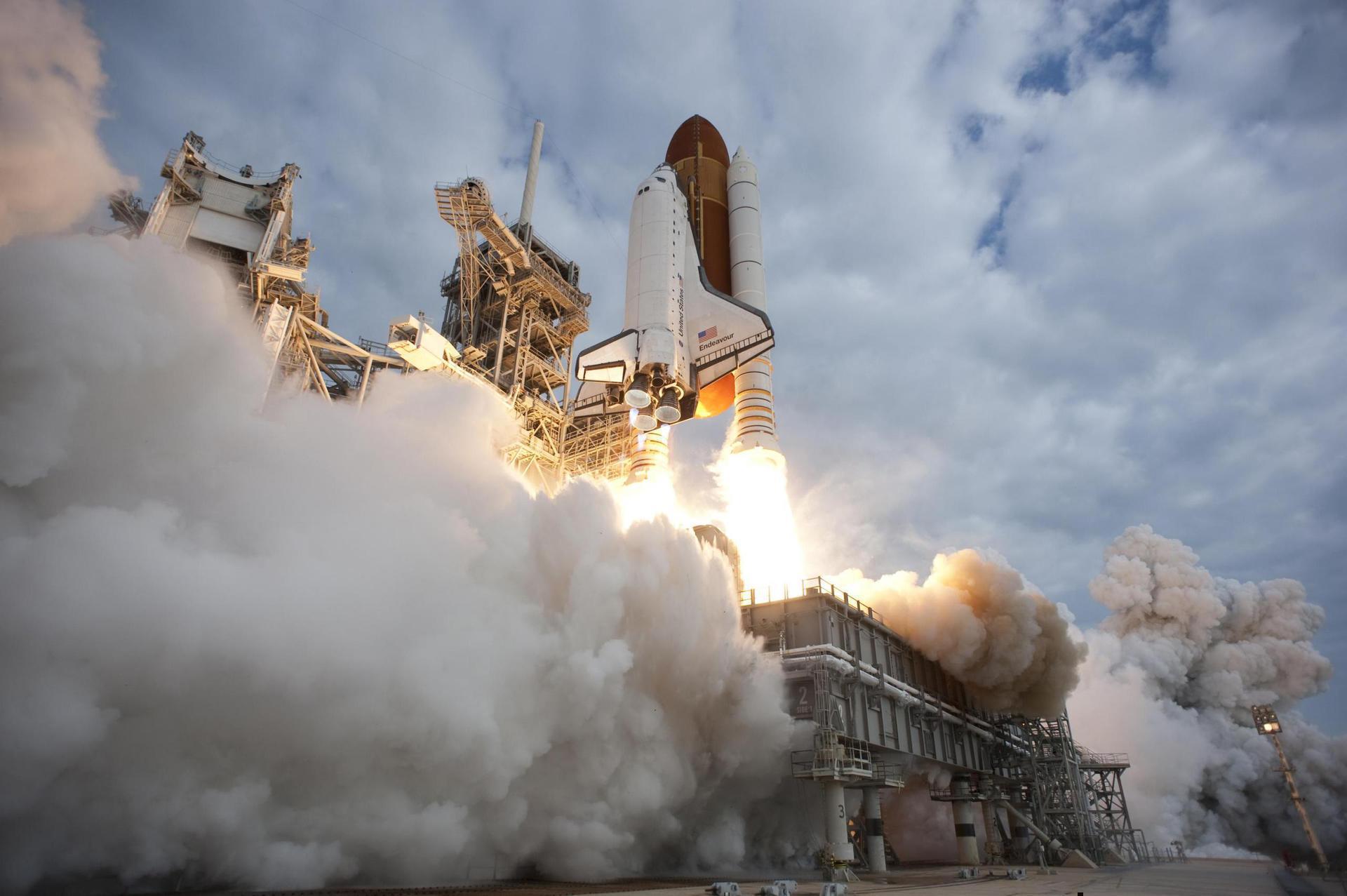
Space Shuttle Discovery / OV-103 | STS-31 (Hubble)
Agency: N/A
Status: Launch Successful
Launch date: April 24, 1990, 12:33 p.m. UTC
Rocket: Space Shuttle
Launch pad: Launch Complex 39B
Location: Kennedy Space Center, FL, USA
...
Latest news about this satellite
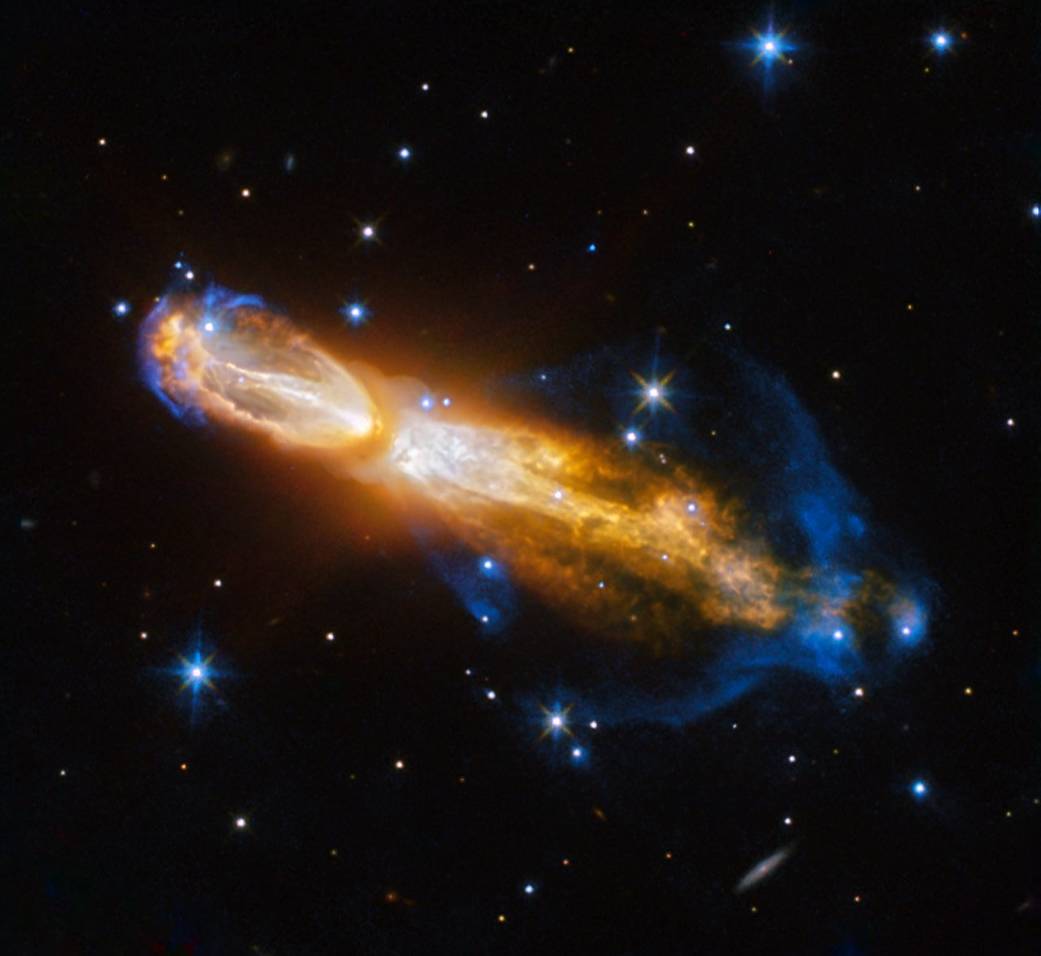
A Rare Gourd
NASA’s Hubble Space Telescope captured an uncommon sight – the death of a low-mass star – in this image of the Calabash Nebula released on Feb. 3, 2017. Here, we can see the star going through a rapid transformation from a red giant to a planetary nebula,...
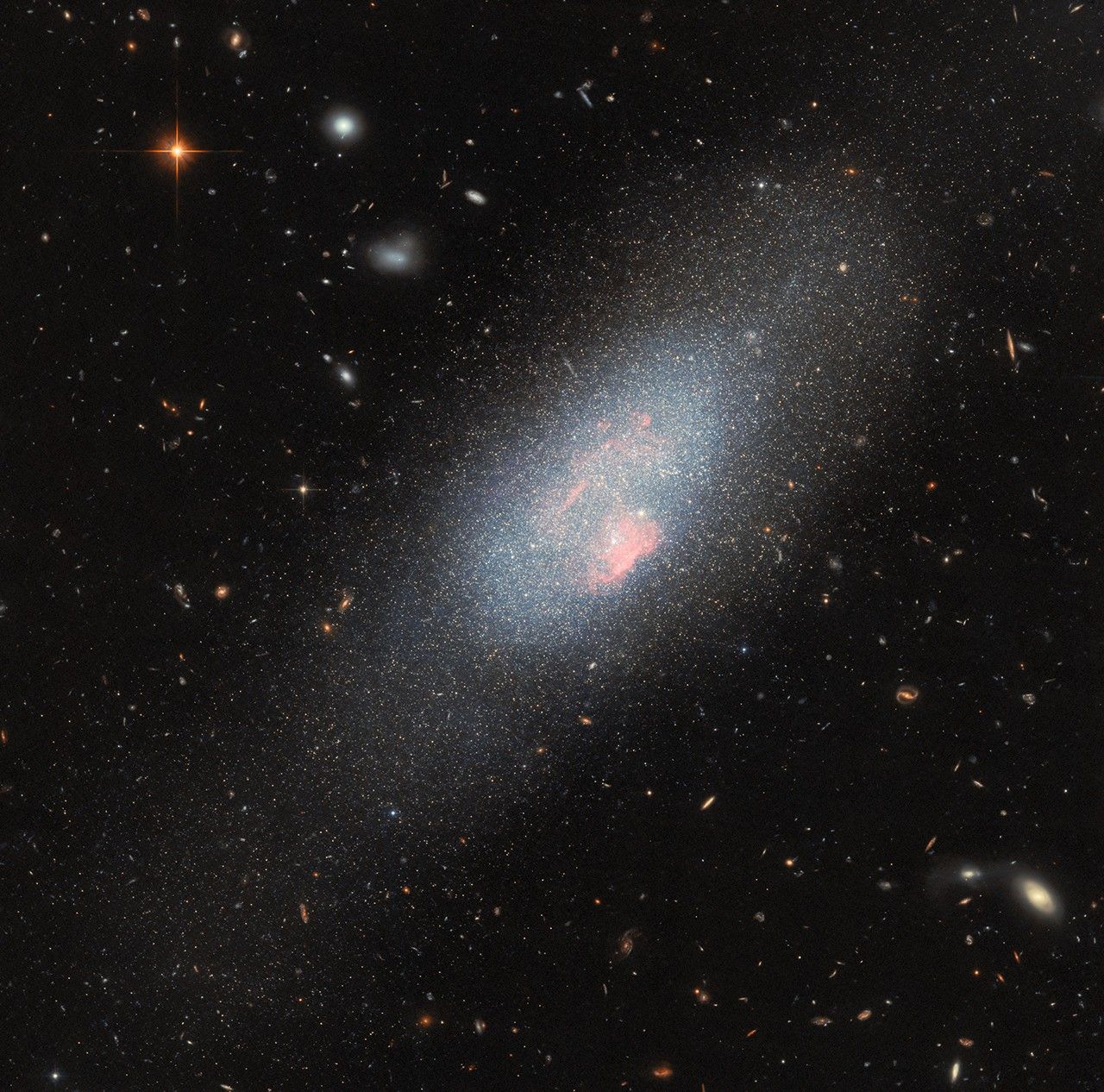
Massive Stars Make Their Mark in Hubble Image
This NASA/ESA Hubble Space Telescope image features a glittering blue dwarf galaxy called Markarian 178 (Mrk 178). The galaxy, which is substantially smaller than our own Milky Way, lies 13 million light-years away in the constellation Ursa Major (the Gre...
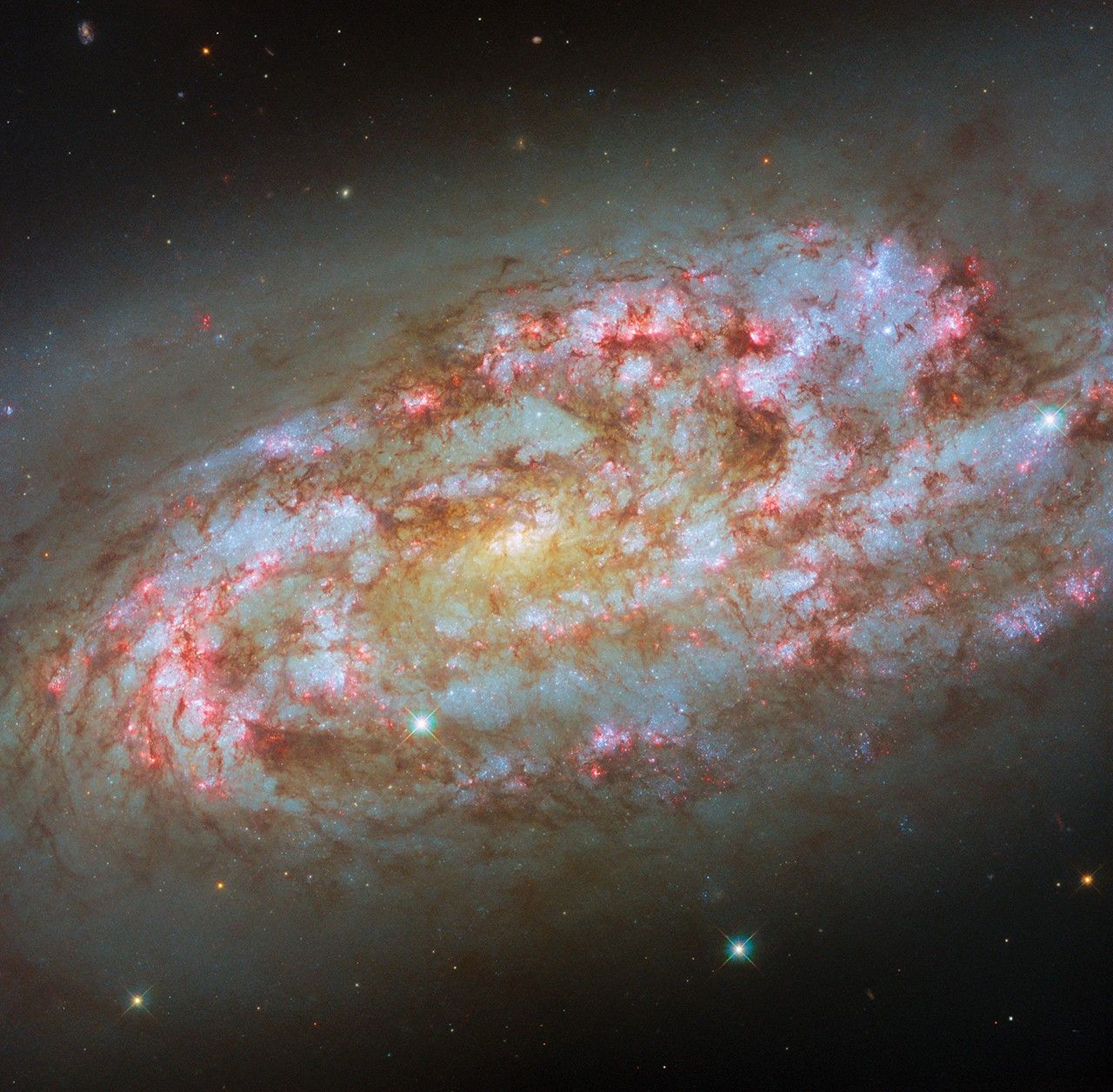
Hubble Spots a Storm of New Stars
This NASA/ESA Hubble Space Telescope image features a stormy and highly active spiral galaxy named NGC 1792. Located over 50 million light-years from Earth in the constellation Columba (the Dove), the bright glow of the galaxy’s center is offset by the fl...
Newsletter sign-up
Weekly statistics, charts and insights to help you stay on top of the space industry.

